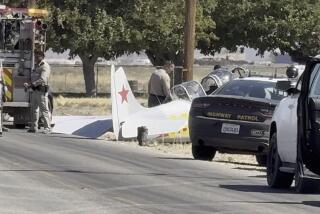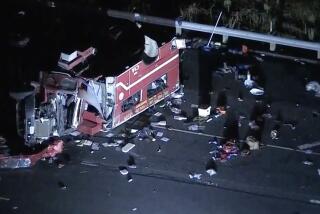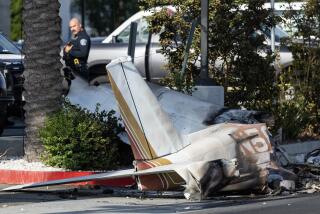SF plane crash: Injured suffer spinal injuries, internal bleeding
SAN FRANCISCO-- The number of people in critical condition has fallen from 10 to 5 at San Francisco General Hospital, which took in dozens of injured passengers from the Asiana Airlines flight that crashed Saturday, hospital officials said.
Among the 34 patients treated at San Francisco General, the more serious injuries included bone fractures and spinal injuries, said Dr. Chris Barton, chief of emergency services. They were the result of “the force of the plane going down,” Barton said. Eleven of those being treated there were children.
Stanford University Medical Center has evaluated 45 patients, and has also seen spinal fractures, as well as internal bleeding. Seven other Bay Area hospitals also saw injured passengers.
RELATED: Passenger describes last few moments before plane crash
Barton said, generally speaking, the type of spinal fractures the hospital saw result from falls, in which vertebrae can compress or burst. He said victims have also suffered blunt force injuries to the head, which can cause bleeding, concussions or contusions.
Of patients and family members he said: “Some are in shock. … Some are stunned. “
He said the mood in the family waiting area was “subdued.”
He said this was one of the most major multiple-casualty incidents he’s seen. Hospital officials had to erect tents and cleared out a pediatric unit to make room for crash victims.
“This is the first time for as long as I can remember where we’ve actually had to use the tents,” Barton said.
Asiana Airlines Flight 214 crashed at SFO just before 11:30 a.m. Saturday. There were 307 people on board the aircraft, including 16 crew members.
The flight originated in Shanghai and stopped in Seoul before heading to San Francisco. According to the authorities, 182 were transported to hospitals, including 49 who were in serious condition.
A passenger aboard the Asiana Airlines flight said the plane’s final approach was too low just before it slammed into the runway.
Moments before the crash, passenger Benjamin Levy said he looked out the window and saw the piers in San Francisco Bay just off the airport runway -- and they were way too close to the plane. “We were too low, too soon,” he said.
“He was going down pretty fast, and I think he just realized he was down too fast,” Levy said.
The pilot then pushed on the engines “just as we were about to hit the water.”
“I think the pilot must have realized because the pilot tried to pull the plane back up,” Levy told The Times in a phone interview. “We hit pretty hard. And I thought the wheels were gone for sure.”
He felt the plane crash -- and heard the screams of passengers -- but the aircraft stayed on its belly as it landed hard on a grassy area next to the runway.
Levy, 39, lives in San Francisco and was in Asia on business for his company, BootstrapLabs, which invests in technology companies. His wife was in Korea with him for the first part of the trip but flew home early to be with their two children, Levy said.
It was “a blessing she wasn’t on the plane,” he said.
Levy, said he was sitting in seat 30K, which he said was “right behind the wing on the right-hand side.”
As the plane crashed, he said everything turned into slow motion.
“First of all, you don’t believe it’s happening,” Levy said. “When the plane stopped, I realized I was going to be OK.”
There was no fire when the plane stopped, but there was smoke and screaming and he worked to help open an emergency door and get passengers off the plane. He said most passengers “managed to get out very quickly.” He said he had to step on the remnants of the plane to escape.
Levy thought he had broken some ribs, but X-rays turned up negative. Now he’s waiting at the hospital for the results of a CT scan.
As for the crash, he says he doesn’t really know how to feel.
“You don’t believe it’s happening to you; you don’t believe that this has happened,” Levy said. “I feel lucky to be alive and to share some information as to what happened.”
The jetliner caught fire when it hit the tarmac, causing black smoke to billow into the sky.
Many passengers were able to get out of the plane before it was consumed by flames.
In a brief phone interview, a passenger who didn’t want to give his name told The Times many passengers were able to get out unharmed.
“Most of the people seem OK, and we’re just letting the paramedics do their job,” he said.
Federal investigators were trying to determine what went wrong. But a source involved in the investigation said the plane appeared to clip a sea wall while landing.
Multiple sources told The Times there was no reported trouble or declared emergency on the plane before it crashed.
Asked at a news conference if pilot error was a factor, Deborah Hersman, chairwoman of the National Transportation Safety Board, said “everything’s on table at this point. We have to gather all the facts before we reach any conclusions.”
Hersman said that federal investigators are deploying now to probe the reasons behind the crash. She said officials from South Korea will also be invited to participate in the investigation.
Witnesses described the plane coming in very low, and pictures and video from the accident appear to show that the debris field began at the sea wall and stretched for hundreds of feet.
For hours after the crash, emergency vehicles with flashing lights swarmed around the plane, and other official vehicles went back and forth along the runway. Several police boats raced through the water.
“We are very shocked,” said South Korean Deputy Consul General Hong Sung Wok. “We have to take care of this sad situation. We will make all efforts to take care of these families. We also express our sorrows to the victims.”
At San Francisco General Hospital, the number of patients in critical condition were reduced from 10 to 5.
Dr. Chris Barton, chief of emergency services, said the hospital had to transfer 10 to 15 patients out of San Francisco General to make way for incoming patients from the plane crash. The staff also cleared out a pediatric unit to secure 25 additional beds.
Barton said the range of injuries was broad -- from “bumps and bruises” to much more serious ones, like bone fractures.
The hospital has seen a lot of patients with spinal injuries, he said, resulting from “the force of the plane going down.”
He said he couldn’t say how specifically different patients were injured, but the type of spinal compression fractures Barton said the hospital saw result from a fall. Vertebrae can compress or burst.
The doctor said victims have also suffered blunt force injuries to the head, which can cause bleeding, concussions or contusions.
Hundreds of people at the SFO terminal saw the air disaster unfold as they awaited their fights.
A Phoenix-bound passenger said Saturday that she saw a plane hit the ground and skid on its belly before turning into “billowing smoke.”
Krista Seiden, 26, a marketing manager from San Francisco, said she was in line to board her flight when she saw the plane make its landing. Nothing seemed amiss at first, she said, but then “I saw it hit the ground and it skidded on its belly.”
She recalled exclaiming: “A plane just crashed.” The startled agent at the U.S. Airways counter said: “What? Are you sure?” then got on the phone with emergency personnel. The agent arranged for passengers who were already on board Seiden’s flight to leave the plane.
Seiden said emergency vehicles headed to the site about a minute after the crash.
Details of the crash were also captured in air traffic radio recordings.
A pilot from another plane announced welcome news to the airport control tower: There were survivors.
“We see people,” a United Airlines pilot told air traffic controllers, according to an audio recording of communications with San Francisco International’s tower. “They need attention. They are alive and walking around.”
The last major incident at San Francisco International Airport happened in 2008, when a United Airlines Boeing 757 jet without any passengers was backing out of a gate and collided with a SkyWest plane carrying 60 passengers and crew, according to the San Francisco Chronicle. No passengers were injured.
The last major crash to occur in the United States was in 2009 when Continental Connection Flight 3407 crashed about six miles short of Buffalo Niagara International Airport. All 48 people on board were killed.
ALSO:
Passenger describes last few moments before plane crash
‘We were too low, too soon,’ passenger on Asiana flight says
Plane crash: SFO reopens 2 of 4 runways; many flights canceled
Times staff writers Jill Cowan, Maria L. La Ganga, Laura J. Nelson and Kate Mather in San Francisco and Rong-Gong Lin II, Harriet Ryan, Ari Bloomekatz, Kurt Streeter, Andrew Blankstein and Martha Groves in Los Angeles contributed to this report.
More to Read
Sign up for Essential California
The most important California stories and recommendations in your inbox every morning.
You may occasionally receive promotional content from the Los Angeles Times.











